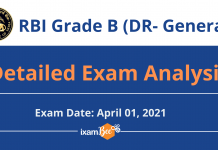What is ARC?
ARC stands for Asset Reconstruction Company. An ‘ARC’ or Asset Reconstruction Company is a financial institution registered under the RBI which is regulated by the SARFAESI ( Securitisation and Reconstruction of Financial Assets and Enforcement of Securities Interest) Act (2002). An ARC is a financial company that buys off the Non- Performing Assets (NPAs) called the bad assets or bad loans from banks and other financial institutions at a mutually agreed value with the objective of recovering or ‘reconstructing’ the bad loans and in turn helping the banks and financial institutions in cleaning up their balance sheets.
Technically, “Asset Reconstruction” means acquisition of bad debts or assets by any securitisation or reconstruction company of any bank or financial institution in any financial assistance for the purpose of realisation of such financial assistance.
How does an ARC work?
Mainly, in India the process of removing the debts off the balance sheets of the banks is called ‘asset reconstruction’,whereas the same process is given the name of ‘securitization’ in other countries. The SARFAESI Act (2002) which was enacted in December 2002, under which an ARC or Asset Reconstruction Company is registered, helps reconstruction of bad assets without the courts’ interference. Many ARCs have been formed since then. RBI holds the power and authority to regulate all the ARCs.The working of an ARC can be summarised in few points:
- SARFAESI Act permits an ARC to acquire the ‘Non-Performing Assets’ (NPAs) or bad loans from banks through a mutual agreement.
- An ARC will acquire NPAs from the banks for an agreed fixed cost which is less than the amount of NPAs.They acquire assets mainly in two ways:
- By Raising Funds: All ARCs can raise funds from ‘Qualified Institutional Buyers’(QIB) to raise money so that they can make a payment to buy discounted debts. They can also issue debt instruments and also sell equity for the same.
- By Partnership Model: In this case, an ARC does not directly buy the NPAs from the bank and therefore remain in the banks’ books. The bank hires the ARC to undertake the debt recovery services. Revenues generated in this way are distributed equally between the bank and the Asset Reconstruction Company depending on the pre-fixed percentage of share.
- The NPAs are transferred to the respective ARC along with any pledged security in the process of taking loan.
- The ARC will then issue security receipts for a fixed interest rate and will further raise money. The Security Receipt gives the holder (Qualified Institutional Buyer- QIB) a right, title or interest in the financial asset that is bought by the ARC.
- If the debts that an ARC aims to recover is already secured by an asset, they can further take possession of that asset after a certain period of time which generally is 60 days.
- In a different case, if the above-mentioned asset is not secured then the companies can file civil suits against the creditors to recover such debts.
An Asset Reconstruction Company (ARC) can take over only those kind of loans from the banks that have been categorized as Non-performing Assets. Presently,there are 19 ARCs in India. Some of the top ARCs in India are listed below:
- Asset Reconstruction Company (India) Limited (ARCIL)
- ASREC (India) Limited
- Alchemist Asset Reconstruction Company Limited
- International Asset Reconstruction Company Private Limited
- Reliance Asset Reconstruction Company Limited
- Pridhvi Asset Reconstruction and Securitisation Company Limited
- Phoenix ARC Private Limited
- Invent Assets Securitisation & Reconstruction Private Limited
- JM Financial Asset Reconstruction Company Limited
- India SME Asset Reconstruction Company Limited (ISARC)
- Edelweiss Asset Reconstruction Company Limited
- UV Asset Reconstruction Company Limited
What are NPAs?
NPA is the acronym used for Non-Performing Assets. A Non-Performing Asset is defined as a ‘’credit facility in respect of which the installment of a loan or principal has remained ‘past due’ or overdue for a specified period of time and more than 90 days in respect of a term loan’’.NPAs basically result from bad loans, when certain customers default on their loan installments or fail to pay a loan amount. Bad loans have affected the banks badly in recent years as they are the main reason due to which the banks are not able to generate income, which results in huge losses and thus reduce the profitability of the banks.
According to the RBI, the gross NPAs majorly in Public Sector Banks are estimated to be around Rs,400,000 crores.This implies that it is almost equal to 90% of the total NPA in India presently, excluding the Private Sector Banks.
Also Read:
& Many More…
Get Free Online Test Series, Daily GK Update, PIB Current Affairs, Banking Awareness as well as latest updates for Bank PO, Bank Clerk, SSC, RBI, NABARD and Other Government Jobs. как получить займ на яндекс кошелеквзять займ в тюменизайм денег барнаул














Very Good information thanks for sharing